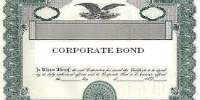Preferred Stock is a class of ownership inside a corporation with a higher claim around the assets and cash flow than common stock. It is a share which entitles the holder to a fixed dividend, whose payment takes priority over that of ordinary share dividends. It generally features a dividend that must definitely be paid out before dividends to common stockholders and also the shares tend not to have voting protection under the law.
Disadvantages of preferred stock financing from investor’s viewpoint are as follows:
(1) As a general rule, preferred stockholders do not have voting right. Therefore, they have no control over the management of the company to protect their interest.
(2) They have a higher risk than investing in the same company’s corporate bonds. The trade-off for a higher yield than on the company’s bonds is that the bondholders will get paid first if the company runs out of money.
(3) Although preferred stockholders bear a substantial portion of ownership risk, they get a limited return.
(4) The preferred stockholders have no legally enforceable right to dividends.
(5) The fluctuation in the price of the preferred stock is wider than that of bonds. It exposes investors to higher price risk.
(6) Inflation can reduce their value. If the dividends on the preference shares are fixed in monetary terms (in other words with no inflation adjustment) then higher than expected inflation will reduce the real value of the dividends paid.
Information Source:
















